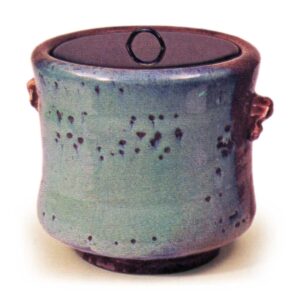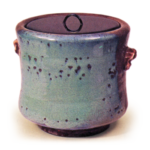
A pottery produced in Ueno, Akaike Town, Tagawa County, Fukuoka Prefecture. It is one of the seven kilns in Enshu. The founder of the pottery, Son Kai (Ueno Kizo), was a Korean potter who became a naturalized citizen during the Japanese Invasion of Korea (1592-8). Around 1605 (00), Takonkai moved to Ueno and opened a kiln. There are kiln sites such as the main kiln of Sarayama in Kamanokuchi and Iwatani, and the main kiln of Sarayama continued until the Meiji era (1868-1912). In 1632 (Kan’ei 9), when the Hosokawa family moved to Kumamoto Castle in Higo, Takonkai moved to Yatsushiro with his first and second sons, but his third son Magozaemon (Totoki) and daughter-in-law Kyuzaemon (Wataru) remained with their mother and served the next feudal lord, the Ogasawara family.
His early works used earthen, ash, and iron glazes, much like Karatsu and Ko-Takatori. In later generations, the style featured Ueno blue glaze (copper green glaze) and sansai over white glaze, and this tradition is still practiced in today’s kilns. Old works were unmarked, and the Tomoe mark was used from around the end of the Edo period.
Shiso, tamago (egg), and yuzu (yuzu-skin) handles are also from later periods, but are appreciated by hobbyists. (“The Complete Collection of Pottery,” 21)








